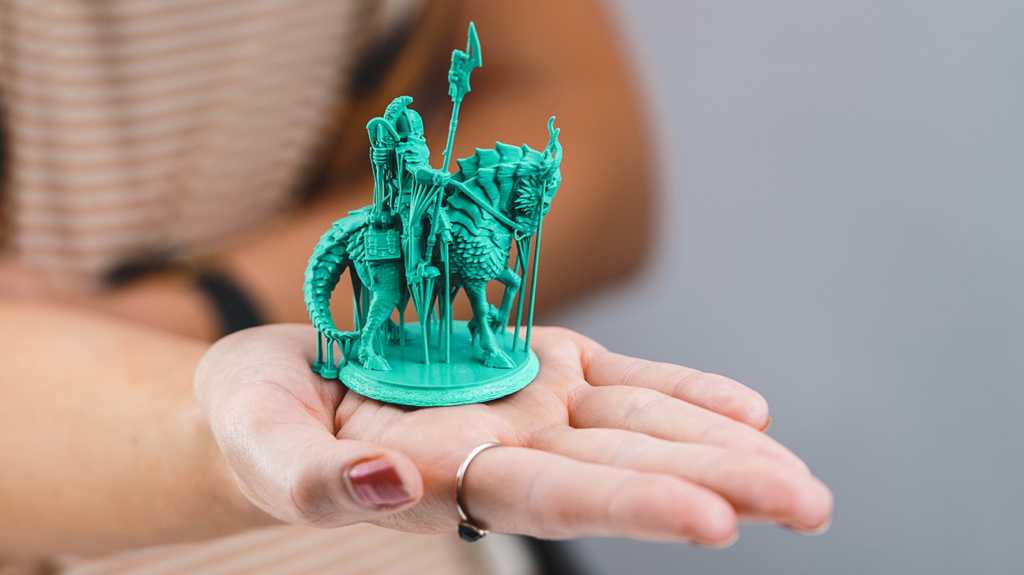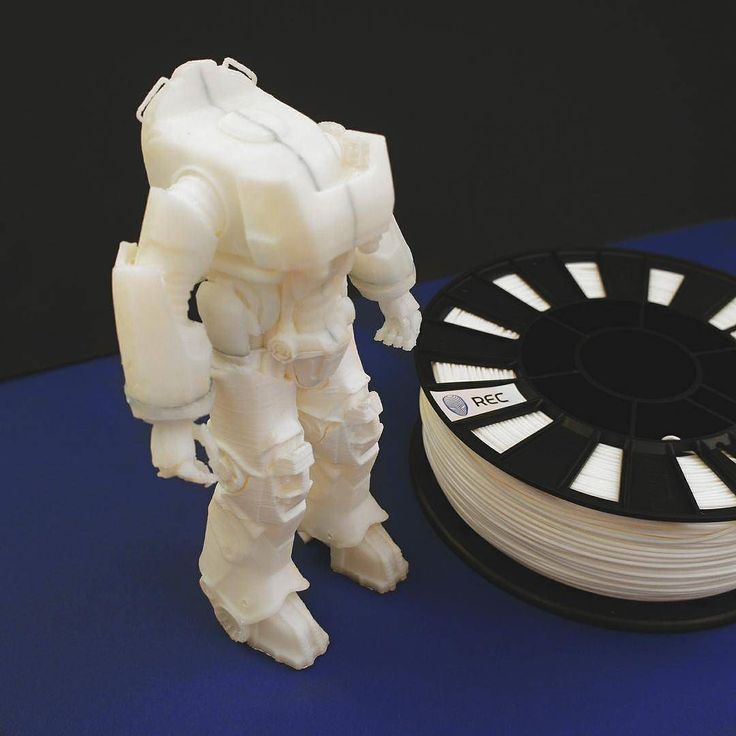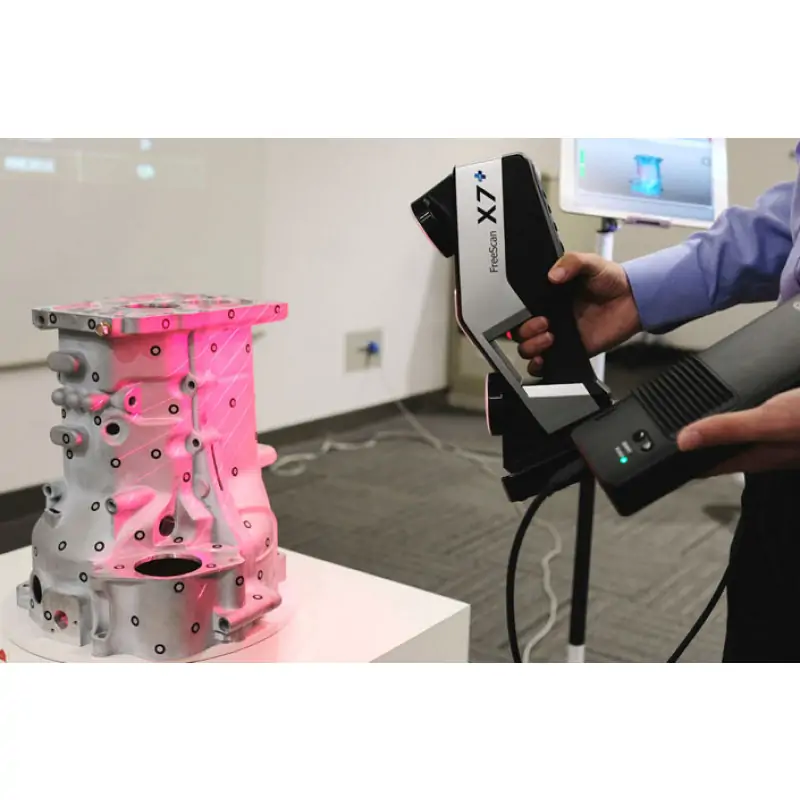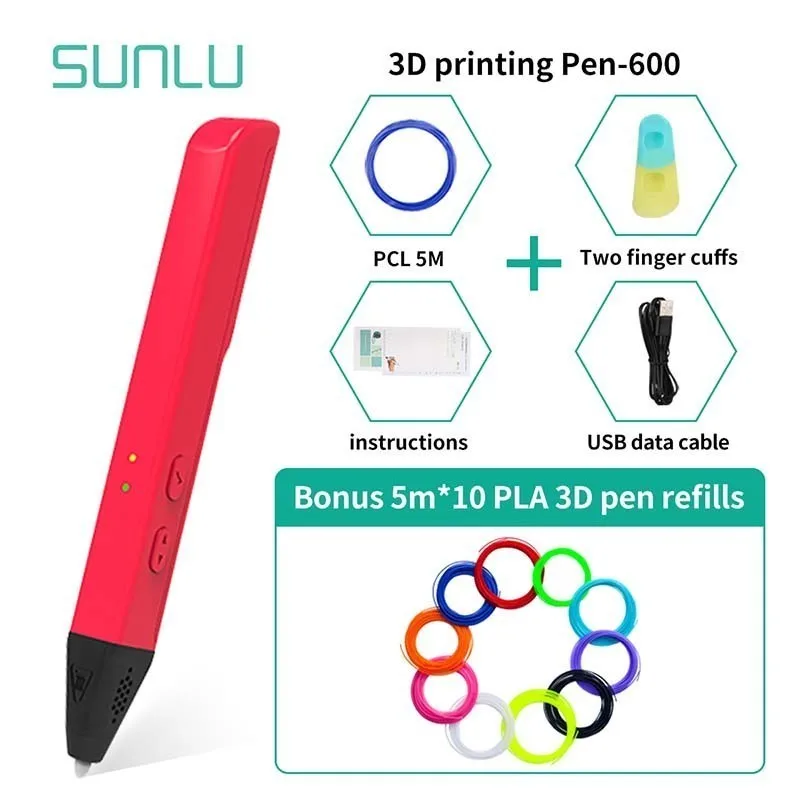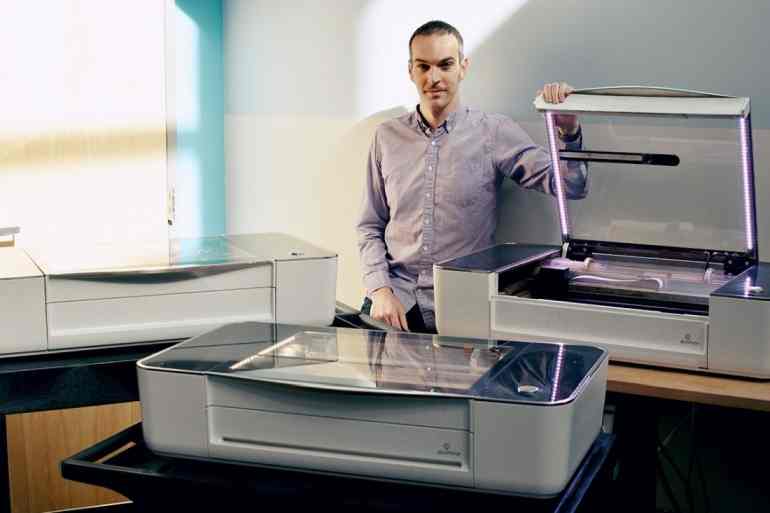3D pill printer
Five companies personalizing treatments with 3D printed drugs
There has been a noticeable shift in recent years towards the personalization of medicine, with the pharmaceutical industry showing interest in pills that are tailored to a patient’s needs. Here are five companies that are leveraging 3D printing to produce customizable drugs.
Conventional drug production relies on large-scale batch manufacturing, which is very efficient at churning out large volumes of drugs with uniform characteristics. But this becomes time-consuming and expensive when small batches are needed, such as for clinical trials where the doses need to be adjusted. The process is also associated with an environmental burden resulting from inefficient use of raw materials, expired stock and production of toxic and non-toxic waste.
Additive manufacturing, or 3D printing, is a tool that can allow for small-scale production of medicines. This approach uses 3D modeling software to build an object layer-by-layer; for solid drugs, the 3D printer stacks ink with an excipient — inactive substances in drugs added for specific functions like improved stability and bioavailability — and the active pharmaceutical ingredient to print out a finished product. By adjusting the printing parameters, the drug dosages, drug combinations, release profiles and even flavors can be personalized.
There are many challenges that have limited widespread implementation of 3D printing technology, such as 3D printers not meeting good manufacturing practice standards and a limited range of excipients suitable for 3D printing. Nevertheless, 3D printing has the potential to revolutionize the pharmaceutical industry, and several companies are making strides in the space.
Aprecia PharmaceuticalsHeadquarters: Pennsylvania, U.S.
Aprecia Pharmaceuticals is behind the first and only U.S. Food and Drug Administration (FDA)-validated 3D printing platform for commercial-scale drug development. Their aim is to make medicines easier to take and reduce the number of pills a patient needs. Using this platform, Aprecia developed ZipDose Technology, which allows tablets to hold a high dosage load of up to 1,000 mg and still rapidly dissolve with just a sip of water.
Content continues below
Related Content
ZipDose is used in the production of Spritam (levetiracetam), a fast dissolving oral medicine for the treatment of specific types of epileptic seizures. It is targeted for patients who struggle to swallow pills or are unable to measure out the precise dosage of liquid levetiracetam. In 2015, Spritam became the first and only 3D printed drug to be approved by the FDA.
FabRxHeadquarters: London, U.K.
Founded in 2014 as a spin-out of University College London, FabRx aims to revolutionize medical treatments by facilitating the production of personalized medicines, where the size, shape, dosage and dosage combinations can be customized. In 2020, the company released M3DIMAKER, the first pharmaceutical 3D printer for personalized medicine, allowing clinicians and other professionals to “print” tailored medicines on demand.
Using their 3D printing technology, FabRx has also created a range of personalized Printlets — medicines with customized shapes, flavors, colors, dosages and release profiles, such as tablets with Braille and moon patterns for patients with visual impairments as well as Polypills, which combine several drugs in one pill.
FabRx technology is also being used to print personalized pills for children with a rare metabolic disorder called maple syrup urine disease, which requires treatments to be strictly tailored based on age, weight and blood concentrations of the amino acid isoleucine. Current manual preparation methods are time consuming and costly, so FabRx’s approach could save time and money for caregivers.
MerckHeadquarters: Darmstadt, Germany
Content continues below
Related Content
The biopharma giant Merck is also taking a stab at next-generation tablet manufacturing through 3D printing. In 2020, Merck announced a cooperation with ACMC — sister company of EOS, a worldwide provider of 3D printing solutions — to produce 3D printed tablets for clinical trials at first, before moving towards commercial-scale manufacturing. This partnership aims to advance the industrial applications of 3D printing technology and digitalization.
Triastek, Inc.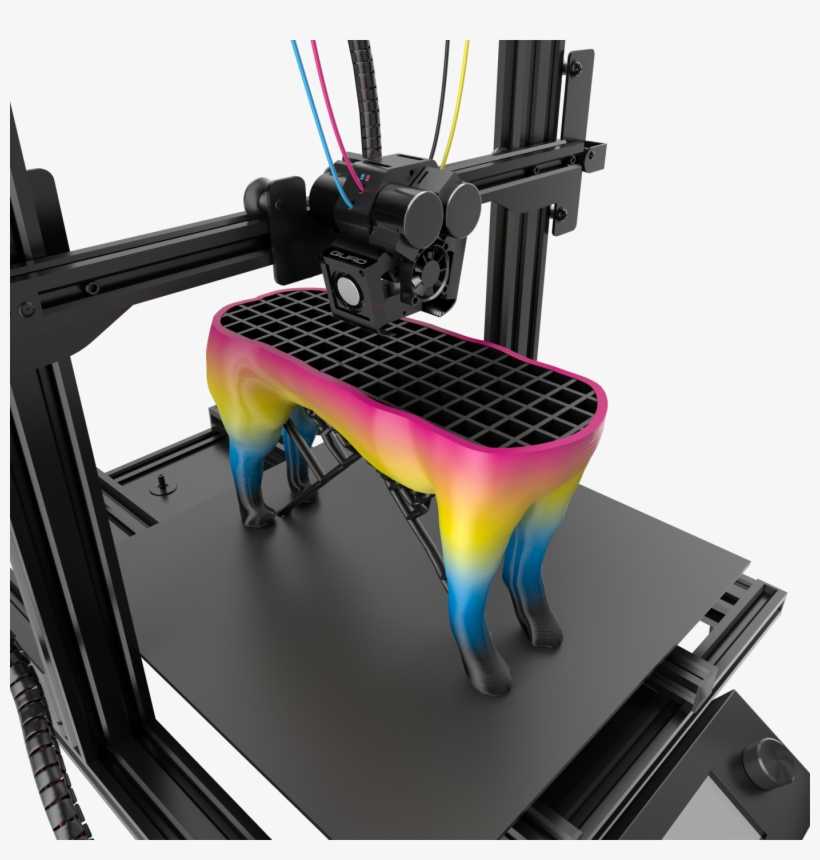
Headquarters: Nanjing, China
Triastek is a global leader in pharmaceutical 3D printing, with 41 patents that account for more than 20% of global 3D printing pharmaceuticals applications. Using their proprietary MED 3D printing technology, Triastek develops their own in-house drugs and partners with others to provide drug development solutions.
The MED 3D printing platform allows for the customizable design of tablets, with the different shapes and geometries controlling drug onset time, duration, and drug interactions with the body. This platform was accepted into the FDA’s Emerging Technology Program in 2020, and two of their 3D printed drugs have been granted investigational new drug clearances from the FDA. The first is a chronotherapeutic drug for rheumatoid arthritis, where the drug is taken at bedtime but its release is delayed until the early morning hours, when pain and joint stiffness are at their peak. The second is a one-dose pill alternative to the twice-daily marketed drug for cardiovascular and clotting disorders.
Triastek recently entered into a research collaboration with Eli Lilly and Company to improve the bioavailability of drugs in the intestine by achieving precise organ targeting and programmed drug release.
GlaxoSmithKlineHeadquarters: Brentford, U.K.
GSK was one of the first big pharma companies to show interest in 3D printing as a manufacturing tool, partnering with the University of Nottingham to study the feasibility of 3D inkjet printing and curing with ultraviolet light to produce solid drug forms; in 2017, researchers demonstrated the successful 3D printing of ropinirole tablets for Parkinson’s disease.
3D inkjet printing deposits liquid materials or solid suspensions layer-by-layer but each deposited layer must first be dried, or “cured,” between the deposition steps. GSK is exploring how to convert active pharmaceutical ingredients into curable ink to enable 3D drug printing.
Are 3D printed drugs the future of personalized medicine?
Published on May 14, 2020 by Carlota V.
Personalized medicine tailors treatment to the individual characteristics of each patient. One of the technologies that enables tailor-made treatments is additive manufacturing. In the medical sector, 3D printing technologies have already been used to create custom-made prosthetics, implants and other medical devices. The technology is even being used to develop 3D bioprinted organs. Another way in which we can adapt treatment to patients is to develop personalized drugs. 3D printed drugs have been developed to adapt to each patient’s needs, and could change treatments in a radical way in the long term. Today, we explore the various 3D printing technologies used to create 3D printed medicine. What are the current techniques? What benefits do they bring? And, of course, how will they impact the pharmaceutical industry?
Nowadays, millions of people rely on medical prescription drugs on a regular basis for various conditions and illnesses. One issue is that due to the mass production of uniform pills, we often consume doses above the recommended ones. According to the CEO of Multiply Labs – manufacturer of pharmaceutical filament for the creation of 3D printed pills – Fred Paretti: “Currently, medications are developed especially for white adult men, which means that all women and children have an excessive prescription for their bodies. This fact underlines the importance of the advent of personalized medicines, as well as highlighting the individuality of each patient. Since the error in the dosage of certain active ingredients can even lead to the malfunctioning of some treatments.”
According to the CEO of Multiply Labs – manufacturer of pharmaceutical filament for the creation of 3D printed pills – Fred Paretti: “Currently, medications are developed especially for white adult men, which means that all women and children have an excessive prescription for their bodies. This fact underlines the importance of the advent of personalized medicines, as well as highlighting the individuality of each patient. Since the error in the dosage of certain active ingredients can even lead to the malfunctioning of some treatments.”
Since 2018 the market for 3D printed medicines has experience growth rate of 7% | Credits: Industry Stats Report
Looking at the 3D printed drug developments in the last few years, we see an encouraging future. In the last two years, the market has experienced a big increase, since 2018 it has had a 7% annual growth rate, and is expected to reach a value of $437 million in 2025 (according to the Industry Stats Report study). The country that accounts for the most growth is the US, with a share of 39. 75% of total revenue. This is due to the fact that the country’s large pharmaceutical companies are betting more on research and development in 3D printing techniques.
75% of total revenue. This is due to the fact that the country’s large pharmaceutical companies are betting more on research and development in 3D printing techniques.
When were 3D printed drugs developed?
It’s in 2015 that the first 3D printed medication was launched. Spritam, a pill created with powder bed technologies, was developed for the treatment of epilepsy. This was also the first drug approved by the FDA. Developed by Aprecia Pharmaceuticals, Spritam opened the door to customized pills, allowing a treatment with different doses for each patient. Today, Aprecia has become one of the key players in this industry, and continues to manufacture this drug with its patented ZipDose® technology. Their technology allows the drugs to dissolve in seconds, a great advantage for people who suffer from epilepsy, or for patients who have trouble swallowing.
In 2015 the first 3D printed pill was released: Spritam | Credits: Appreciates Pharmaceuticals
The same year that Spritam arrived, Dr.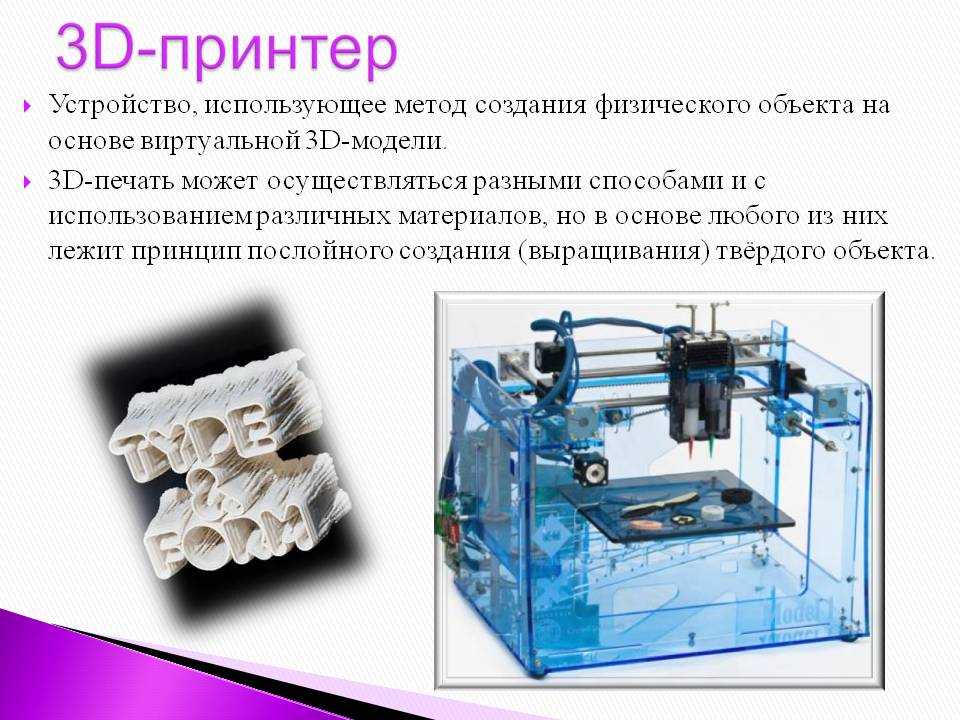 Martin Burke of the Howard Hughes Medical Institute and his team of researchers developed a 3D printer for manufacturing drugs through blocks of molecules. This was accomplished by noticing that in the case of small molecules there are some patterns (groups of atoms) that repeat. Therefore, they isolated hundreds of these patterns and created a 3D printer capable of assembling them to create the desired molecule, allowing the development of customized pills.
Martin Burke of the Howard Hughes Medical Institute and his team of researchers developed a 3D printer for manufacturing drugs through blocks of molecules. This was accomplished by noticing that in the case of small molecules there are some patterns (groups of atoms) that repeat. Therefore, they isolated hundreds of these patterns and created a 3D printer capable of assembling them to create the desired molecule, allowing the development of customized pills.
Another major finding that came to light in the early years of 3D printed drug development was a study by the National University of Singapore (NUS) showing that several drugs could be printed in a single pill. On top of this, the study revealed it was possible to schedule the release of each substance within the pill. In 2016, Multiply Labs brought this idea to the market by launching its startup. Today, the company manufactures pharmaceutical filaments that allow programmed release of drugs inside a 3D printed pill. Fred Paretti told us: “At Multiply Labs, we apply 3D printing to the manufacture of the capsule or container of the medicine. It is not a normal capsule, inside this 3D printed cover, we actually have separate compartments. And each part of the capsule can release a drug at a different time.” Although the company is not in the business of printing active substances, its 3D printed pills can be a solution for large pharmaceutical companies, which would allow them to take only one pill a day for patients who need multiple drugs.
It is not a normal capsule, inside this 3D printed cover, we actually have separate compartments. And each part of the capsule can release a drug at a different time.” Although the company is not in the business of printing active substances, its 3D printed pills can be a solution for large pharmaceutical companies, which would allow them to take only one pill a day for patients who need multiple drugs.
Multiply Labs manufactures the 3D printed pill compartments and cover | Credit: Multiply Labs
The current technologies on the market
Since the arrival of the first 3D printed drug in 2015, the development of techniques for its manufacture have been increasing. To identify these techniques we have counted on the collaboration of FabRx, “Pharmaceutical Biotechnology Spin-out of the University College of London (UCL), which specializes in 3D printing of oral dosage forms, that is, creation of drugs by means of additive manufacturing“, Patricija Januskaite Senior Scientist of the pharmaceutical company told us.
Fused Deposition Modeling (FDM)
The FDM/FFF technique is one of the most widespread in drug 3D printing. Filaments loaded with medicines can be used for the manufacture of the pills. One of the great challenges when using this technique is adjusting the extrusion temperatures so that this does not affect the active ingredients of each pill. “Fused Deposition Modeling (FDM) has the ability to make combinations of multiple drugs (polyps), as well as sustained or delayed release tablets,” Patricija Januskaite explains.
In addition to loading the filaments with drugs, there is also the possibility of using pharmaceutical filaments that would not affect the drug contained, which is the case of Multiply Labs. “We can 3D print a compartment/pill with a very thin wall that can release the product, in about 30 minutes, and then add another wall that can release another drug in 2 hours; all in a single capsule with two compartments that allow for a programmed release“, comments Fred.
Direct Powder Extrusion
This is a similar technique to the one used for the development of the first 3D printed medication: ZipDose®. In the case of the latter, its development is mainly used to create medication with a high load of medication and with high disintegration due to the porosity of the materials. Direct powder extrusion has been patented by FabRx. It involves the extrusion of powdered material (a mixture of active ingredients and excipients) through a nozzle using a unique screw extruder. This type of drug allows sustained or delayed release dosing, according to the British pharmaceutical company.
Stereolithography (SLA)
Stereolithography or SLA uses photopolymers for the solidification of resins or liquid materials. In the case of this technology, drugs can be incorporated into the polymer network to produce pills loaded with active ingredients or to develop sustained release medical devices. This technology is the one that best enables the combination of different drugs in the same 3D container.
This technology is the one that best enables the combination of different drugs in the same 3D container.
Selective Laser Sintering (SLS)
The manufacture of a 3D pill with SLS technology refers to the mixture of active ingredients with some copolymers. The fusion of these powders is achieved by a laser. The use of this technique allows the creation of medicines with several characteristics: they can go from controlled-release dosage forms to orodispersible ones.
Pills created with SLS technology | Credits: Sintratec
Inkjet printing
Although this technique is reminiscent of 2D printing methods, it’s actually closer to Binder Jetting technology. In the case of drug manufacturing, combinations of active ingredients and excipients or inks are sprayed through the nozzle that creates the structures layer by layer. They are solidified with the aid of a powder substrate which is then sprayed.
In addition to the above techniques there are variations on some of them, and many pharmaceutical companies are developing their own technologies or improving some of the existing ones.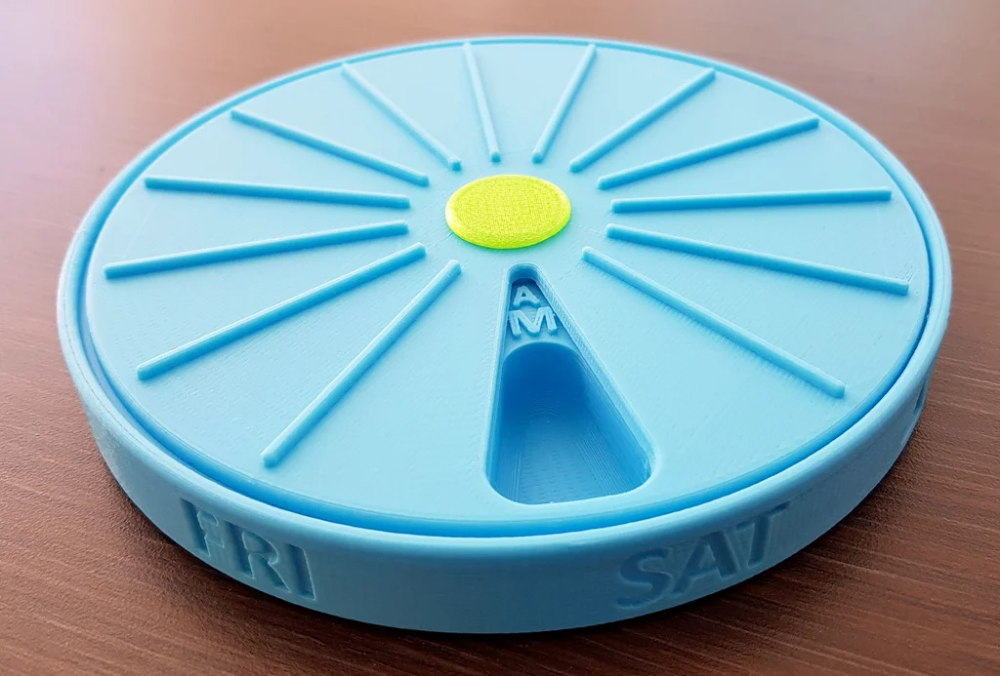
What does the future hold for 3D printed drug manufacturing?
Although we can consider that we are still at the early stages of the development of 3D printed drugs, and the official arrival of personalized medicine, we cannot deny that this sector is growing. The companies interviewed agree that we will see changes in our drug consumption within the next decade if the sector continues to grow as it has in the past two years.
In addition to the speed of development, we must not forget the importance of subjecting these novelties to the regulations that a sector like the medical one needs. As with the arrival of many new technologies, the misuse of printing on medicines could result in harm to many patients, and even allow the adaptation of these techniques for the inclusion of other substances harmful to health.
We know that the future of 3D printed medicines is undoubtedly promising and will change the course of today’s treatments: “In ten years’ time no patient will agree to take the same thing as another million of people.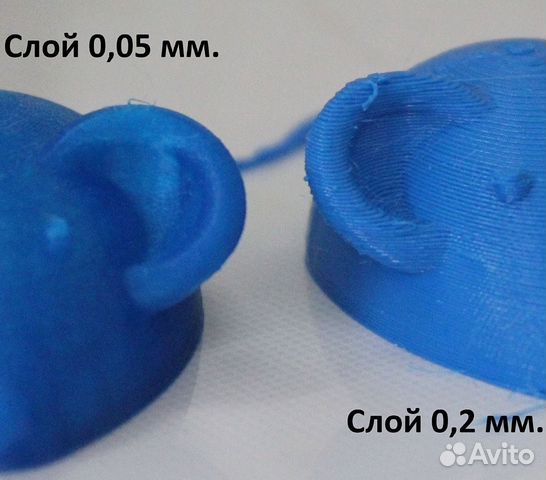 And no doctor will prescribe the same thing to two patients“, concludes Fred Paretti from Multiply Labs.
And no doctor will prescribe the same thing to two patients“, concludes Fred Paretti from Multiply Labs.
What do you think of 3D printed drugs? Let us know in a comment below or on our Facebook and Twitter pages! Don’t forget to sign up for our free weekly Newsletter, with all the latest news in 3D printing delivered straight to your inbox!
3D drug printing
September 11, 2018
Popular science competition "Bio/mol/text"-2018
Overview
Tablet formed by printing layers of polymer mixed with drug
Alvaro Goyanes
-
Author
- Alexey Korolev nine0021
-
Editor
- Andrey Panov
Topics
- "Bio/mol/text"-2018
- Biology
- Biotechnology
- Medicine nine0020
- Personalized medicine
- Pharmacology
Bio/mol/text contest entry: Recently, 3D printing has become one of the most revolutionary and powerful tools in many areas. The pharmaceutical industry is no exception. This article will tell readers about the history of 3D printing in the pharmaceutical industry, the latest developments and achievements in this field, and the prospects for the development of 3D printing in the industry. nine0003
The pharmaceutical industry is no exception. This article will tell readers about the history of 3D printing in the pharmaceutical industry, the latest developments and achievements in this field, and the prospects for the development of 3D printing in the industry. nine0003
This work was published in the nomination "Biopharmaceuticals" of the competition "bio/mol/text"-2018.
The general sponsor of the competition is the Diaem company: the largest supplier of equipment, reagents and consumables for biological research and production.
The partner of the nomination is the medical company Invitro.
The audience award was sponsored by the Genotek Medical Genetics Center.
"Book" sponsor of the competition - "Alpina non-fiction"
Introduction
3D printers can now create just about anything. From car parts and fashion accessories to transplant organs and pharmaceuticals. For example, 3D printers can print medical devices with intricate designs, geometries, and features that fit a particular patient's anatomy.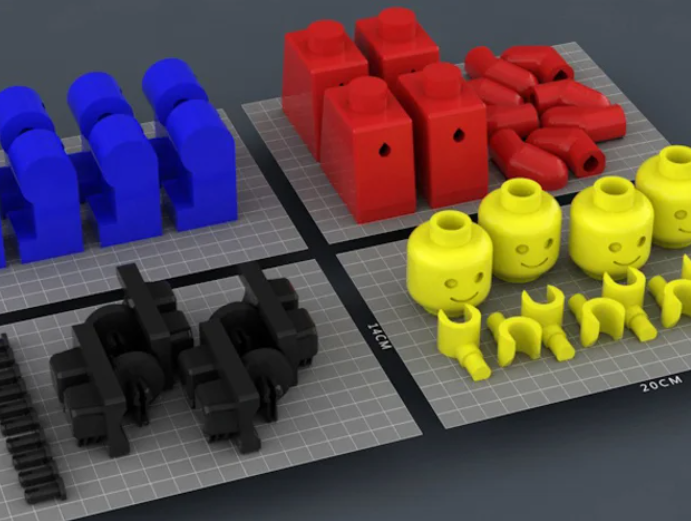
3D bioprinting of organs and tissues is described in the articles " Organs from the laboratory " [1] and " Artificial organs and tissue engineering " [2]. — Ed.
Medical 3D printing is rapidly revolutionizing healthcare. The use of 3D printing in medicine brings wide-ranging benefits: personalization of medical devices, medicines, cost-effectiveness, increased productivity, and democratization of design and production.
Before we start delving into the topic of 3D printing in the pharmaceutical industry, let's figure out what 3D printing actually is.
Three-dimensional (3D) printing is an additive (additive) manufacturing method in which objects are made in layers by melting and sintering solid or solidifying liquid materials (ceramics, plastics, metals, powders, liquids, or even living cells).
There are about two dozen 3D printing methods that use different printing technologies, resolutions and speeds. There are hundreds of materials from which you can recreate a 3D object of almost any shape.
In order for a three-dimensional object to come into being, you must first create a digital model in a 3D editor, or CAD program, and export it to STL format. Using a special slicer program, translate the STL file into a control G-code for a 3D printer, prepare the 3D printer for work, and start printing. Essential Printer Elements - working platform (it forms the object) and print head (it forms the object layer by layer). Some time passes (if the object is small - a few minutes or hours, and if it is large, then printing can take more than a day), and voila, the object is ready!
What is 3D printing we learned, move on.
A bit of history
Figure 1. The most important advances in pharmaceutical 3D printing
- Early 70s. Pierre Ciraud ( Pierre Ciraud ) described the method of applying a powder material and then solidifying each layer under the influence of a high energy beam.
- 1984 Stereolithography (SLA) , invented by Chuck Hull ( Chuck Hull ), was the first commercially available 3D printing technology. This method is based on the photopolymerization of liquid resin with ultraviolet light.
- Mid 1980s. Karl Deckard ( Carl Deckard ) developed a method for solidifying powder layers using a laser beam, which he called the Selective Laser Sintering (SLS) method.
- 1989 Scott Crump ( Skott Crump ) patented the Rapid Prototyping (FDM) technology, a method that uses a thermoplastic material to form a 3D object. Otherwise this technology is called deposition modeling .
- 1990s. Invented DOS method - basically the same as used in inkjet printers.
- 2008 Invented the RepRap printer, a self-copying mechanism for rapid prototyping.
- 2015 The American company Aprecia Pharmaceuticals has developed ZipDose technology, which allows to form tablets that are convenient because they quickly dissolve in a small amount of water.
This technology produced the first FDA-approved printed drug, Spritam® ( Food and drug administration , US Food and Drug Administration) [3].
Dictionary
- DOD
- ( Drop On Drop ) liquid overlay.
- DOS
- ( Drop On Solid ) hard overlay.
- FDM
- fused deposition method, additive manufacturing technology.
- SLA
- stereolithography, additive manufacturing technology for models from liquid photopolymer resins. nine0164
- SLS
- selective laser sintering, additive manufacturing technology.
- STL
- file format widely used for storing 3D object models for use in additive technologies.
How drug printing works
Many different 3D printing techniques have been invented and developed over its 40 year history.
The basic 3D printing methods (fig. 2) are based on:
- solidification of the powder material
- curing fluid
- extrusion [3]
Figure 2. 3D printing methods used to create medicines
Despite the variety of 3D printing methods, each of them includes the following steps, which we talked about at the beginning (Fig. 3) [3] :
- designing a 3D object using software and optimizing the geometry of the object according to the printer specification;
- export of a 3D model to a file format recognized by the printer, for example, STL; nine0020
- importing a file into the software and creating layers in it that will be printed. The height of the printed layer significantly affects the quality of the object, as well as the print time;
- fabrication of an object by subsequent application (or curing) of layers of material.
Figure 3. Stages of 3D printing, development
Application of 3D printing in pharmaceuticals (examples) see where these technologies are already being successfully used to create pharmaceutical products. nine0003
Example 1
As reported above, the first 3D printed drug was Spritam® (Fig. 4), developed by the American pharmaceutical company Aprecia Pharmaceuticals and approved by the Food and Drug Administration (FDA) . The active substance of the drug - levetiracetam - is an antiepileptic drug. Levetiracetam is able to quickly dissolve in the mouth, the time of disintegration (dissolution) of the drug is from 2 to 27 seconds (average - 11 seconds). A small sip of water is required to disintegrate the drug. The liquid formula, which binds levetiracetam and excipients for the manufacture of the drug, contains flavor-masking additives that improve the patient's condition [4]. nine0003
Figure 4: Spritam® (levetiracetam), the first 3D printed drug
Aprecia Pharmaceuticals
Example 2 medical products. The company was founded by a group of scientists from University College London who saw the potential of 3D printing technology to create drugs [5]. nine0003
Figures 5-7 show FabRx developments.
Figure 5. Gummy-like drugs in a variety of shapes, sizes, colors, textures and flavors. FabRx makes them attractive to different patient groups, especially young and old.
fabrx.co.uk
Figure 6. FabRx researchers experimented with the sizes and shapes of preparations and conducted a study that showed that a pyramid-shaped tablet dissolves faster in water than a cylindrical one
fabrx.co.uk
Figure 7. Scientists from University College London also experimented with different drug forms (octopus, dinosaur, cat, monkey and others) for a pediatric patient group
The future of 3D printing drugs in pharmacies is closer than you think
Few examples came out, as 3D printing is just being introduced into the pharmaceutical industry, and today only a few companies are 3D printing medicines.
Benefits and prospects of 3D printing in pharmaceuticals
Benefits
- Customization and personalization. 3D printing technologies allow custom dosage forms, release profiles and dosage for each patient.
For example, for small patients, a tablet can be printed in the form of some cute animal of any color (Fig. 7).
- Improving cost efficiency. 3D printing will reduce production costs by reducing the use of unnecessary resources. Some drugs can be printed in forms that can be easily and conveniently delivered to the patient (Fig. 8). nine0020
- Democratization. Another feature of 3D printing is the democratization of product design and manufacturing. As the cost efficiency of 3D printing increases, the products become orders of magnitude cheaper. [6]
Figure 8. FabRx Products
fabrx.co.uk
Perspectives
In the distant future, perhaps if 3D printing develops, everyone will be able to print a drug at home. So far, this can only be a dream. But in the near future, as the researchers suggest, drugs can be printed in pharmacies and hospitals. nine0003
Can 3D drug printing replace traditional drug manufacturing technologies? No - it will require huge investments, trained employees and a number of other things. Yes, and large pharmaceutical companies can prevent the penetration of 3D printing into pharmacies and hospitals. 3D printing is unlikely to catch on in large enterprises, as 3D printers print much more slowly than pharmaceutical production machines. Another significant barrier that may prevent the widespread use of 3D printing in pharmaceuticals is the long and costly obtaining approvals from the quality control services of medicines. In addition, manufacturing regulations and government legal requirements also hinder the spread of 3D drug printing [6]. nine0003
Pharmaceutical 3D printing is young and still evolving. I think that 3D printing will not be able to capture the pharmaceutical market, since Big Pharma is not going to give up. And as already mentioned, in the world there are only two companies aimed at the development of three-dimensional printing of drugs - this is the American company Aprecia Pharmaceuticals and the British company FabRx.
Conclusion
3D printing has become a useful and transformative tool in a number of different areas, including pharmaceuticals. Researchers continue to improve existing 3D printing technologies. Medical and pharmaceutical advances with the help of 3D printing are already serious and exciting, but it will take time and money for everyone to be able to come to the pharmacy and print their own drug. nine0003
- Laboratory organs;
- Artificial organs and tissue engineering;
- Witold Jamróz, Joanna Szafraniec, Mateusz Kurek, Renata Jachowicz. (2018). 3D Printing in Pharmaceutical and Medical Applications – Recent Achievements and Challenges. Pharm Res . 35 ;
- MurtazaM Tambuwala, NitinB Charbe, PaulA McCarron, MajellaE Lane. (2017). Application of three-dimensional printing for colon targeted drug delivery systems. nine0306 Int J Pharma Investig . 7 .47;
- Abdul W. Basit, Simon Gaisford 3D Printing of Pharmaceuticals - Springer International Publishing, 2018;
- Ventola C.
L. (2014). Medical applications for 3D printing: current and projected uses. P. T. 39 , 704–711.
Comments
3D printing of a tablet - replaces several different drugs at once
Printing tablets on a 3D printer
The first steps in the field of manufacturing tablets using a 3D printer have already been made, but these developments have not yet received proper distribution. The world's first 3D-printed pill called Spritam, designed to fight epilepsy attacks, was approved by the US government about a year ago and became a real breakthrough in the pharmaceutical field. In general, 3D printing technology has made it possible to create unique preparations with a porous structure that instantly dissolve upon contact with a liquid. This approach ensures rapid release of drug components and also eliminates potential problems with swallowing the tablet. But recent research has shown that 3D-printing a tablet will prove useful in another direction as well. nine0003
Researchers have high hopes for 3D-printed drugs with the ability to adjust the release time of the drug. In simpler terms, one 3D-printed tablet can replace three different ones, the contents of which will be supplied to the body during the day strictly at a certain time. This development interested mechanical engineer Fred Paretti so much that he, along with several other entrepreneurs, founded a company called Multiply Labs with the goal of making 3D printed tablets on his own. But the company's drugs are not focused on the treatment of diseases. nine0003
3D printed generic tablets
Instead, the organization is working to produce generic dietary supplements customized to each individual customer's requirements. Now let's explain what the point is.
Modern society is at a high level of technological development, which, however, suffers from other areas of our lives. Keeping track of your own health in such conditions is becoming increasingly difficult, but almost everyone realizes the importance of this moment. We eat too many processed foods, drink too much coffee, while receiving far fewer nutrients than we need. A 3D-printed tablet containing the required amount of useful elements can correct the situation. nine0003
The necessary nutritional supplements and vitamins can help fill the deficiency, but few will force themselves to take several tablets throughout the day. Given the current situation, the prospects for the development of Multiply Labs can hardly be underestimated. The concept is based on a special technology for 3D printing tablets (with the gradual release of drugs), patented by scientists at the Massachusetts Institute of Technology. The team uses a conventional MakerBot Replicator 2 3D printer and hydroxypropyl cellulose-based fibers to make the tablets. nine0003
The potential of 3D printed tablets
With the help of 3D printing, the size and shape of the produced capsules can be adjusted by changing the capacity of the drug and vitamin compartments. The different thicknesses of the dividing walls allow active preparations to be released gradually throughout the day. Testing of tablets showed excellent results, fully confirming all the expectations of the developers. The potential of 3D printed pills is really huge. The invention is able to completely turn the pharmaceutical industry. A 3D-printed tablet can be made from absolutely any polymer that can be digested by the human body, which makes it even easier to control the release of active substances. nine0003
Now maintaining a healthy lifestyle will no longer be a serious problem. All that is needed is to determine the necessary additives and create an individual batch of tablets. For example, vegetarians can get extra protein this way, lovers of processed foods will consume enough vitamins, and coffee fans can replace several cups of their favorite drink with one 3D-printed tablet. All together in just one capsule. Multiply Labs plans to launch the development for sale in May 2017.


